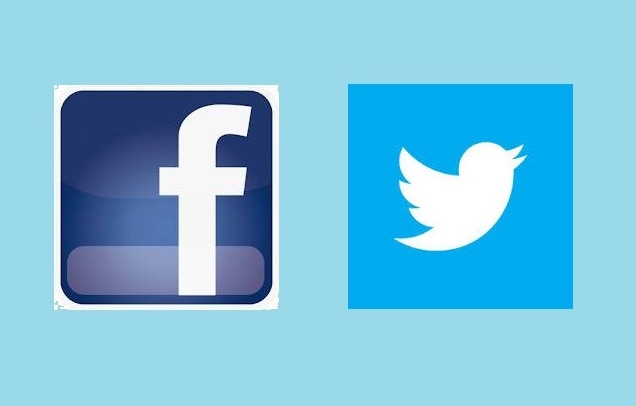March 17, 2014

Ten years ago, you never dreamed of putting a picture of your breakfast on the Internet, or sharing your musings while you sit in traffic. And you couldn’t show the world videos of the funny tricks performed by your children or your dog.
Now you can, courtesy of social media outlets such as Facebook (founded in February 2004), YouTube (February 2005), Twitter (March 2006) and Pinterest (March 2010), to name a few.
It didn’t take long for the social media phenomenon to sweep around the world, and while it is a global tool, it has local applications, making it ideal for an organization like the U.S. Meat Export Federation (USMEF) that supports U.S. red meat exports around the world, but tailors the message to each individual market.
Social media is insanely popular and is incredibly powerful – and cost-effective – if used properly. USMEF’s marketing team around the world has adopted many of these tools for our use, timing our rollout of these tactics to keep in step with the local conditions and, ideally, a step ahead of our competitors.
Consider these facts about just a few of the leading social media channels:
Facebook has 1.23 billion monthly active users – up 16 percent over last year
4.5 billion “likes” are generated daily
Twitter has an estimated 1 billion registered users
184 million active monthly Twitter users – led by China (35.5 million as of May 1, 2013)
YouTube has more than 1 billion unique users each month
More than 6 billion hours of videos are watched on YouTube monthly – almost an hour for every person on Earth
80 percent of YouTube traffic comes from outside the U.S.
Pinterest has more than 70 million users – 80 percent of them women
About 2.5 billion Pinterest pages are viewed monthly
USMEF has followed the launch of the key social media channels closely, often using them as an efficient method for attracting the attention of the youthful early adopters who also have an interest in high-quality red meat products. USMEF offices also have relied on social media when traditional channels were either too expensive or unwilling to carry positive messages about American products. Following are some of the highlights from several key U.S. export markets that are among the first adopters of social media trends.
Like what you’re reading? Subscribe to the National Hog Farmer Weekly Preview newsletter and get the latest news delivered right to your inbox every week!
First steps
USMEF-South Korea led the way for the organization’s social media engagement in late 2007 as 100,000 protesters took to the streets of Seoul to protest their government’s decision to readmit U.S. beef after a BSE-related absence. That incident launched an approach by the USMEF marketing team to encourage independent food bloggers to write about the products when other media outlets wouldn’t even accept paid advertisements for fear of inspiring consumer boycotts. Those relationships have since been expanded to create positive visibility for U.S. pork in Korea.
The USMEF team in Japan, however, has adopted a broader range of social media tools in an environment that has been very receptive to U.S. red meat. As in Korea, USMEF first reached out to consumers in Japan through bloggers, working closely with homemaker-communicators who found a niche with a very receptive audience.
“Bloggers are a very powerful tool,” said Tazuko Hijikata, senior manager of consumer affairs for USMEF-Japan. “We began working with several bloggers as long as six years ago, some of whom have 5,000 visitors reading their blogs every day.”
She noted that a single update to the “Enjoy Family Life” diary-style blog drew nearly 10,000 users to the USMEF website.
Hijikata’s team is planning several Facebook campaigns in the coming year, including one where USMEF’s Facebook followers share where they dine to enjoy U.S. red meat, as well as posting popular recipes.
Yet another channel, YouTube, is being utilized to post how-to videos for fresh meat preparation. One such video for U.S. pork captured more than 245,000 views in one month.
China
The world’s biggest concentration of pork consumers is rapidly evolving into the world’s social media hub, and USMEF-China is an active participant in the evolution targeting China’s 1.3 billion consumers.
“Social media has developed very fast and, as mobile devices become more and more popular, social media has quickly become one of the most important public relations tools in China,” said Joel Haggard, senior vice president for USMEF’s Asia-Pacific region.
Educating distributors, chefs and gourmets was the original goal in China as USMEF began promoting cooking ideas, recipes and restaurant recommendations through the Weibo channel in late 2011, but that audience quickly grew to include consumers. The site took off in 2012 and reached a peak of more than 65 million users last year. But, just as MySpace was eclipsed by Facebook in the U.S., Weibo has yielded its top spot among Chinese social media followers to Wechat, which claims an estimated 600 million users.
USMEF-China has approached Wechat since mid-2013 much as it did Weibo earlier. USMEF-China also has developed its own U.S. Meat App for smart phones to provide consumer information and education.
Looking ahead, Haggard and his team are targeting restaurant ranking websites, such as Dianping.com, which younger consumers use in larger cities to determine where they want to dine. Promotions with websites of this nature can help direct diners to restaurants that serve U.S. pork.
Beyond social media
While social media has proven an important and cost-effective tool, USMEF’s marketing teams are already looking at the next generation of Internet-based tools. The USMEF-China team has taken an aggressive approach. Recently it collaborated with China’s business-to-business market leader, TMall.com, to introduce eight U.S. pork items with guaranteed nationwide delivery in less than 48 hours. The site drew an enormous number of viewers in the first few hours of operation, and a USMEF promotion, developed with support from the Pork Checkoff, attracted more than 2,000 applications in the first hour for a chance to win samples of U.S. pork.
There are 600 million Chinese Internet users, up from 45 million in 2002, and the online population is growing about 4 percent per year, according to a McKinsey Global Institute report. That creates a huge bulls-eye for Internet marketers. In fact, China’s TMall set a record last year when it sold $5.7 billion of goods and services in a single 24-hour period.
What we are seeing in China is the tip of the iceberg. A report by the Pew Research Center shows 37 percent of the population in China owns a smart phone, but there are other markets outside North America, the EU and the top Asian economies that also boast high smart phone usage, including Lebanon (45 percent), Chile (39 percent), Jordan (38 percent), Malaysia (31 percent) and Venezuela (31 percent).
The future of food sales of all types, and red meat in particular, will be closely intertwined with the Internet and social marketing. Every market reacts at its own pace, but they are all moving in the same direction.
You might also like:
High Hog Prices Come with Complicated Consequences and a Positive Export Picture
You May Also Like



